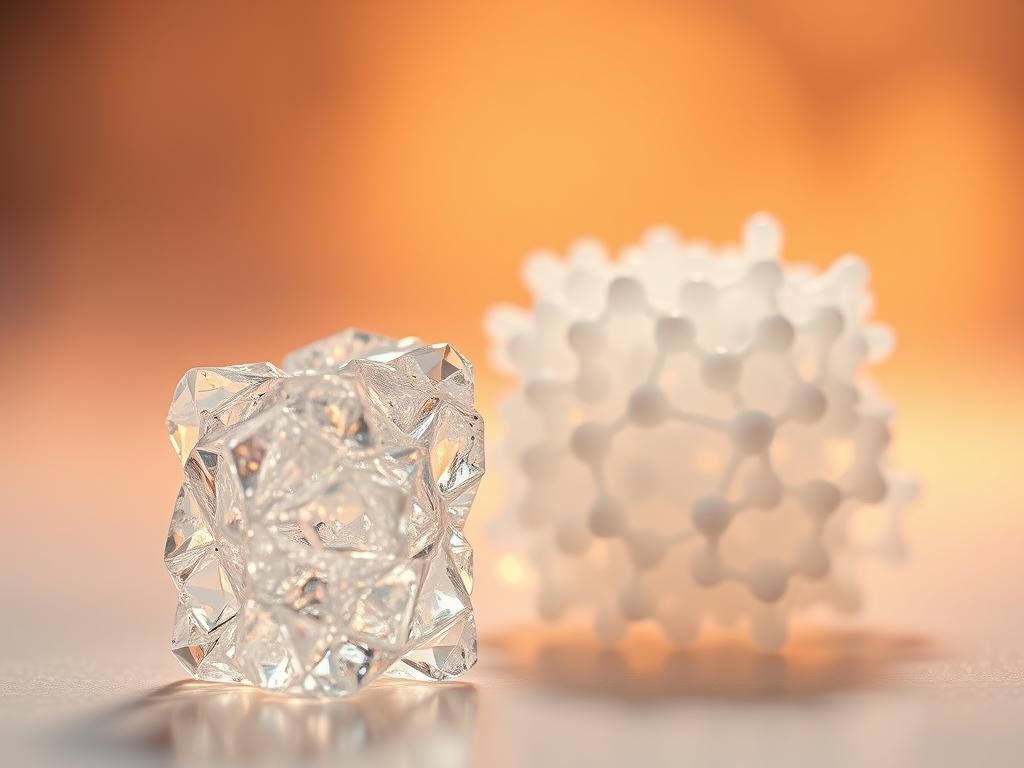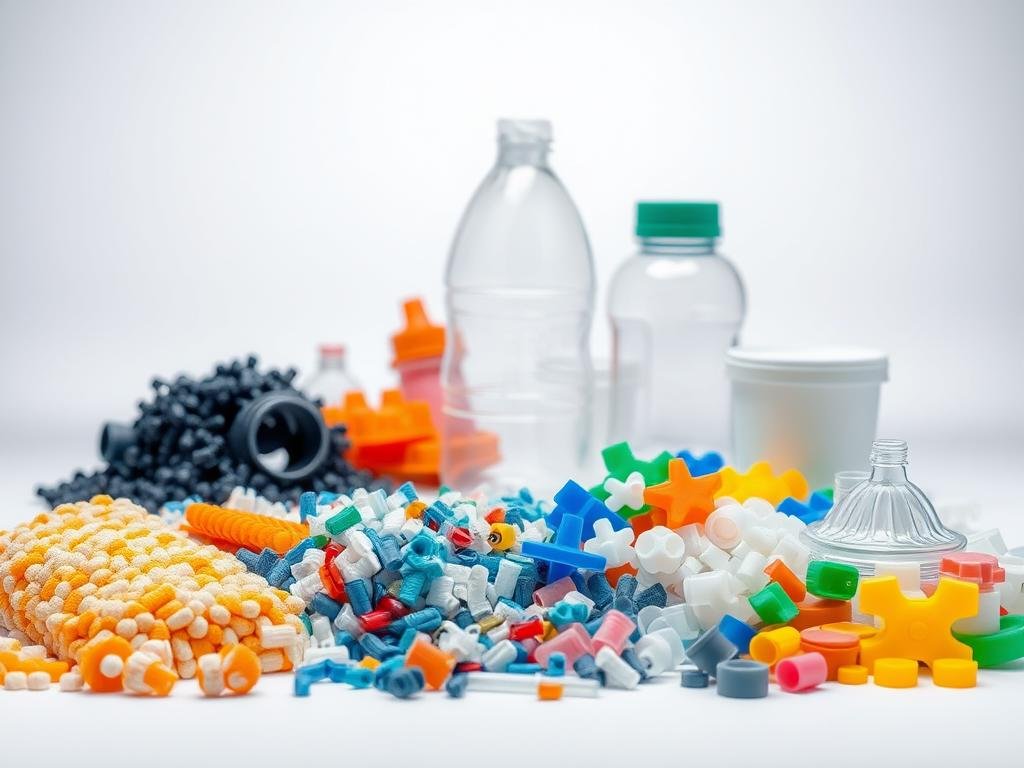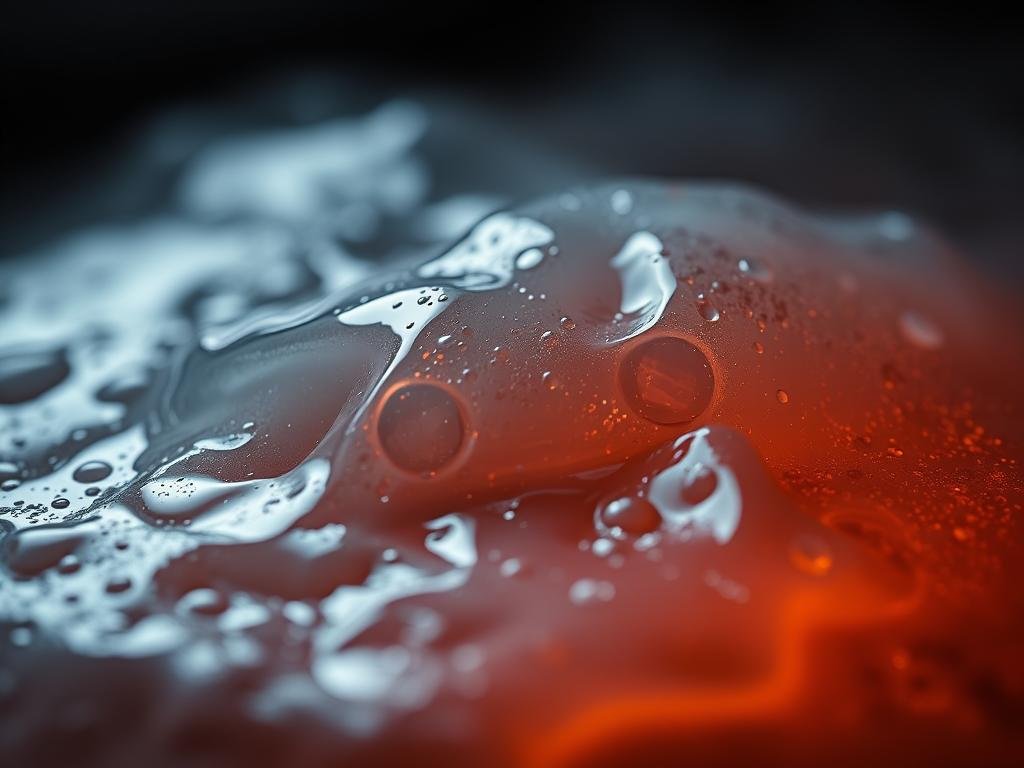Surprising stat: up to 40% of common production defects trace back to wrong processing temperatures. That single fact changes how teams pick materials and set equipment.
This guide defines what that temperature mark means for polymers and why it matters for tooling and part performance. For many thermoplastics, ordered regions lose structure and begin to flow as heat rises. Some grades show a sharp change, while others soften across a range.
Rapidaccu brings over 15 years of CNC machining and manufacturing experience. We help engineers pick materials and process settings that yield consistent surface finish and dimensional accuracy.
Use this guide as a practical reference for design, cycle time choices, and quality control in U.S. production environments. You will learn how melt behavior affects warpage, sink, and final performance across common applications.
Understanding Plastic Melting Point in Manufacturing
Controlling melt behavior is a top driver of dimensional accuracy in molded parts. Heat turns crystalline regions to flowable material while amorphous zones soften, and that transition governs fill, welds, and surface finish.
From solid to liquid: how thermoplastics transition under heat
Thermoplastics absorb energy until chains can move and the material flows. Balancing heat input with screw shear yields a controlled melt for injection molding and for preparing stock for CNC work.
Why melting temperature matters for accuracy, surface finish, and strength
Viscosity and fill behavior change with melt state. Too cool causes short shots and poor welds. Too hot can degrade chains and reduce tensile and impact strength.
- Uniform melt reduces voids and knit lines, improving dimensional consistency.
- Shear rate, residence time, and screw condition alter delivered melt more than barrel setpoints alone.
- Proper thermal control protects performance while enabling repeatable quality on both molded and machined parts.
Rapidaccu’s perspective: tying melting behavior to precision CNC and molded part quality
With 15+ years serving prototypes through mass production, Rapidaccu uses material data and shop trials to dial settings. That practice yields tight tolerances and excellent surface finish across injection and post-process operations.
| Melt Condition | Process Effect | Common Remedy | Quality Impact |
|---|---|---|---|
| Underheated | Poor flow, short shots | Raise zone temps, increase shear | Dimensional loss, weld lines |
| Optimal | Uniform viscosity, full fill | Stable barrel, tuned screw | Best accuracy, surface finish |
| Overheated | Degradation, discoloration | Lower setpoints, shorten residence | Reduced strength, cosmetic defects |
whats is the plastic melting point: definitions, ranges, and key terms
Resins don’t all soften the same way—some shift suddenly, others drift through a range. That difference shapes processing windows, tooling choices, and inspection plans.
Melting point vs melting range
Crystalline grades show a distinct melting point where solid regions become liquid-like. Amorphous grades soften across a melting range and lose stiffness gradually.
Glass transition, Vicat, and decomposition
- Glass transition (Tg): onset of rubbery behavior in amorphous materials; affects stiffness long before true melt.
- Vicat softening: practical test for softening under load; useful when no sharp melt exists.
- Decomposition temperature: a hard upper limit; avoid processing above it to prevent breakdown and loss of properties.
- Hygroscopic polymers absorb water, which can act as an internal plasticizer and alter apparent softening unless dried.
| Term | What it shows | Processing relevance |
|---|---|---|
| Melting point | Sharp solid-to-liquid change | Defines melt setpoints for crystalline resins |
| Melting range | Gradual softening span | Guides heat profiles and hold times |
| Glass transition (Tg) | Stiff-to-rubbery shift | Informs forming and finishing temps |
| Vicat / Decomposition | Softening under load / chemical breakdown | Used for service limits and max safe temps |
Rapidaccu helps teams convert these markers into actionable setpoints that protect properties and improve manufacturability. For deeper reference on common ranges, see plastic melting points.
Crystalline vs amorphous plastics: how structure shapes melting and processing
Crystalline and amorphous families behave very differently during molding and machining.

Sharp transitions and semi-crystalline behavior
Semi-crystalline materials—such as polypropylene, polyethylene, and nylon—show defined melting point values and hold rigidity until that change.
They often shrink more during cooling, which can challenge tight tolerances but can improve wear and fatigue resistance when crystallinity is controlled.
Gradual softening and amorphous options
Amorphous grades like polycarbonate, ABS, polystyrene, and PMMA soften over a range. That easing helps fill complex features and often gives better clarity and surface finish.
These materials usually deliver superior dimensional stability at room conditions and simpler processing for aesthetic parts.
- Cooling rate alters crystallinity in semi-crystalline grades, changing wear resistance, creep resistance, and long-term stability.
- Gate layout, venting, and packing must match family behavior to control flow and shrinkage.
- Nylon needs careful drying and tight temperature control to meet surface and dimensional targets.
| Property | Semi-crystalline | Amorphous | Processing note |
|---|---|---|---|
| Thermal change | Sharp melting point | Softens over range | Adjust cooling and mold temp |
| Shrinkage | Higher, variable with crystallinity | Lower, more predictable | Use packing and vents accordingly |
| Finish & clarity | Opaque, may need anneal | Clearer, better aesthetics | Choose based on end-use |
| Mechanical traits | Higher wear resistance | Better dimensional stability | Match material to function |
Rapidaccu advises picking crystalline or amorphous grades to match target tolerances, surface finish, and post-processing plans. Control of melt and mold temperature during setup will drive consistent outcomes.
Injection molding temperatures explained: melt temperature vs mold temperature
Many shops treat barrel setpoints as a direct read on delivered melt, but the true material temperature at the nozzle often differs. Mechanical shear, screw condition, and residence time all add heat. That higher delivered melt can push a part into degradation without anyone noticing.
Raising mold temperature reduces molded-in stress in amorphous grades like PC and ABS. That improves impact strength, fatigue life, and resistance to stress-crack failures.
For semi-crystalline resins, mold temperature sets crystallinity. That choice affects wear, creep, and dimensional stability through service life.
- Verify true melt at the nozzle rather than relying on barrel zones.
- Keep melt lower and mold higher when possible to cut cooling time and limit resin breakdown.
- Check screw wear, optimize residence, and use stable mold channel design for steady temperature control.
| Issue | Cause | Action | Effect on parts |
|---|---|---|---|
| Unexpected hot melt | High shear / long residence | Monitor nozzle temp; reduce screw speed | Prevents degradation, keeps strength |
| Low impact toughness | Cold mold on amorphous resin | Raise mold temp moderately | Improves toughness and stress-crack resistance |
| Dimensional drift | Improper crystallinity | Adjust mold temp and cooling rate | Stabilizes shrinkage and wear resistance |
| Chasing flow with heat | High melt setpoints | Use higher mold temp instead | Shorter cycles and better surface quality |
Rapidaccu tunes melt and mold temperatures to protect properties, cut cycle time, and elevate surface finish across prototype and production runs. For reference ranges and charts, consult this molding temperature chart.
Plastic melting point and typical processing ranges
Start setups faster by using shop-proven temperature windows tied to common resins and part geometry. These reference ranges give a reliable starting spot for trial runs and troubleshoot events.
Quick reference for common materials
Below are typical melt and mold temperatures. Use them as starting values and adjust by part thickness, gate design, and finish goals.
| Material | Melt range (°C) | Mold temp (°C) | Notes |
|---|---|---|---|
| ABS | 190–270 | 40–80 | Good balance of flow and finish for many parts |
| HDPE | 210–270 | 20–60 | Higher density than LDPE; different melt behavior |
| LDPE | 180–240 | 20–60 | More branched; lower typical melt temperature |
| Polypropylene (PP) | 200–280 | 30–80 | Often higher melt than HDPE for stiffness and heat resistance |
| Polystyrene (PS) | 170–280 | 30–60 | Wide range; control needed to avoid brittleness |
| Polycarbonate (PC) | 280–320 | 85–120 | Needs elevated mold temp for low stress and good toughness |
| Nylon 6 | 230–290 | 40–90 | Hygroscopic; dry and run hot to meet mechanical targets |
| PEEK | 350–390 | 120–160 | High-performance; demands precise thermal management |
| PBT | 240–275 | 60–90 | Good for dimensional stability with correct mold temp |
- Note that LDPE, HDPE, and polypropylene show different melting points despite shared family ties; choose ranges by grade.
- Document validated windows during sampling to ensure repeatable production across shifts and sites.
- Always confirm grade-specific data with suppliers and adjust for part geometry and surface goals.
Selecting the right plastic by melting behavior and application
Choose resins by how they perform under heat and service load to avoid late-stage surprises in production.

Material behavior under heat drives many selection choices. Crystalline grades keep structure until a sharp change, while amorphous grades soften gradually. That contrast affects dimensional stability, impact performance, and chemical resistance in use.
Balancing heat resistance, dimensional stability, impact, and chemical resistance
Match material choice to the operating environment and load path. Parts exposed to sustained heat or solvents need higher resistance and controlled shrinkage.
For designs needing low warpage, favor amorphous options or tightly controlled cooling on semi-crystalline resins. Rapidaccu provides DFM input to align materials with functional targets and manufacturing limits.
High-temperature polymers for demanding environments
For sustained temps or harsh chemicals, consider high-temp materials like PEEK or PPS. They keep stiffness and performance where many common resins fail.
These grades raise processing energy, require precise process control, and increase cycle time. Still, they deliver reliability for long-life applications.
Cost, processing capability, and production volume considerations
Balance part cost, shop capability, and volume when selecting a material. Higher-performance resins add cost and processing complexity that affect throughput and energy use.
- Align choice with heat exposure, chemical resistance, and load so the part keeps function.
- Consider dimensional stability: semi-crystalline needs tighter cooling; amorphous may lower warpage risk.
- Some polypropylene and polyethylene grades offer good chemical resistance and toughness for many applications.
| Material class | Strengths | Manufacturing note |
|---|---|---|
| Amorphous (PC, ABS) | Low warp, good finish | Moderate temps; easier cycle control |
| Semi-crystalline (PP, PE) | Chemical resistance, toughness | Tight cooling needed for dimensional stability |
| High-temp (PEEK, PPS) | High heat and chemical stability | High process temps, greater energy use |
Use Rapidaccu’s DFM guidance to converge on a material and process plan that meets schedule, quality, and budget across prototype and production runs.
Testing and control: measuring and managing melting temperatures
Measuring phase change and softening gives manufacturers the data to set safe, repeatable processing windows.
Differential Scanning Calorimetry (DSC) pinpoints melting and glass transition values so shops can set realistic temperatures that avoid thermal overshoot. Vicat tests show softening under load for amorphous grades.
Melt Flow Index (MFI) compares flow at a standard temperature and guides gate sizing, wall thickness, and cycle time. Thermomechanical Analysis (TMA) forecasts dimensional drift through thermal cycles.
Visual and process checks
Hot-stage microscopy visually confirms phase changes and helps correlate DSC peaks during failure analysis. Rapidaccu pairs lab results with in-process monitoring to protect properties from sample to scale.
- Use DSC for accurate melting point and Tg settings.
- Use Vicat when load-bearing performance matters below true melt.
- Apply MFI to compare grades for flow behavior in production.
- Run TMA to set tolerances and fixture decisions for thermal cycling.
| Test | Use | Shop outcome |
|---|---|---|
| DSC | Melting and Tg | Processing windows |
| MFI | Flow comparison | Gate/wall sizing |
| TMA | Dimensional shift | Tolerance control |
| Vicat / Hot-stage | Softening and visual phase change | Material qualification |
Control advice: stress closed-loop temperature control, consistent residence time, tuned cooling profiles, and thorough drying of hygroscopic resins to remove water and reduce splay. For reference on tested ranges, see material melting reference.
From prototype to production: Rapidaccu’s role in material and temperature optimization
Rapidaccu turns early prototypes into production-ready parts by locking in material choices and thermal windows before scaling. Our DFM process matches materials to function, then defines practical melt and mold targets that protect strength and finish.
Design for manufacturability and validation
We run prototype trials to validate temperature windows and gate production entry. Trials capture nozzle melt, shear effects, and residence time so settings remain stable when volume rises.
- Match materials to expected load and finish requirements.
- Document melt at the nozzle and audit screw and barrel condition.
- Stabilize mold temperature to improve impact, reduce stress, and preserve dimensional stability.
Precision outcomes at scale
Integration of molding and CNC machining knowledge ensures parts meet tolerances after cooling and post-process work. Rapidaccu’s 15+ years of manufacturing experience accelerates sampling, cuts trial-and-error, and keeps quality steady from first article through full-rate production.
| Step | Verification | Outcome |
|---|---|---|
| DFM & material selection | Prototype tests | Validated process window |
| Process control | Nozzle & mold monitoring | Repeatable quality |
| Scale-up | Documented controls | Consistent production |
Conclusion
A clear grasp of thermal transitions helps teams convert lab data into repeatable shop settings. Use melting point data and realistic temperature windows to guide material choice and trial setups.
Remember that crystalline grades show sharper melting behavior while amorphous grades soften across a range. Delivered melt often differs from barrel setpoints, and higher mold temps can boost impact and lower stress.
Control over melt and mold settings reduces part stress, improves resistance to cracking and fatigue, and tightens dimensional outcomes. Match materials to applications, confirm ranges like ABS 190–270°C or PEEK 350–390°C, and validate with DSC and in-process checks.
Partner with Rapidaccu for DFM, material selection, and parameter tuning to move reliably from prototypes to production with consistent surface finish and dependable performance.

